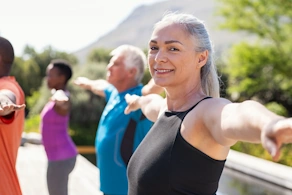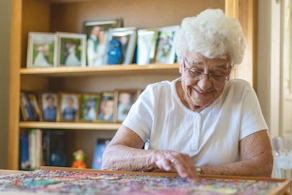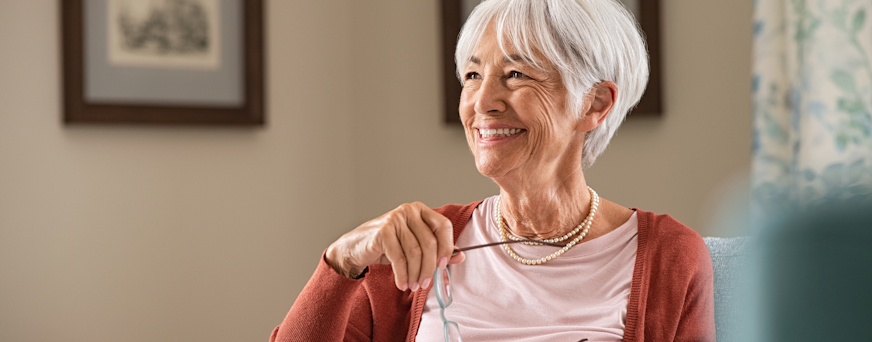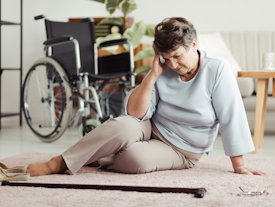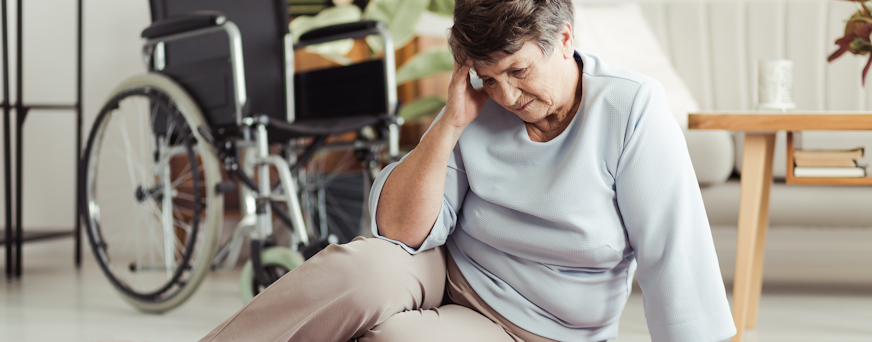Best Floor Exercises For Seniors To Improve Strength And Mobility
Staying active is crucial for maintaining health and independence as we age. For Canadian seniors, floor exercises are a practical way to boost strength and mobility at home. These exercises improve flexibility, balance, and mental well-being, helping seniors stay fit and manage daily tasks more easily. This guide provides Canadian seniors with the tools to safely incorporate floor exercises into their routines, supporting a healthier, more active lifestyle.
Life Assure Product Quiz
Take our 30 second quiz and discover which Life Assure medical alert device is the right fit for you or a loved ones.
Life Assure Product Quiz
Take our 30 second quiz and discover which Life Assure medical alert device is the right fit for you or a loved ones.
Benefits Of Floor Exercises For Seniors

Floor exercises bring a host of benefits that are crucial for seniors' well-being. Physically, they enhance flexibility, strength, and balance, which are key to reducing stiffness and preventing falls. Improved flexibility can ease movement, while stronger muscles and better balance help maintain stability.
Regular activity can lift mood and ease anxiety and depression, fostering a sense of well-being. Completing exercise routines also boosts self-esteem and confidence, giving seniors a sense of achievement.
Sticking to an exercise routine is vital for maintaining independence and quality of life. By enhancing physical abilities, seniors can more easily handle daily tasks like walking, bending, and reaching, which are essential for living independently.
Getting Started With Floor Exercises
To kick off a new exercise routine safely, seniors should first set up a comfortable space. Choose an area free of clutter with a non-slip surface to avoid falls. A yoga or exercise mat can add comfort and protect joints during workouts.
Wearing the right clothes makes a difference too. Opt for loose, breathable fabrics that allow easy movement. Supportive, non-slip shoes are ideal, though some exercises might be better barefoot for better grip.
Before diving in, it's wise to check with a healthcare provider. They can ensure exercises fit your health needs and offer personalized advice to avoid injuries.
Keep water nearby to stay hydrated and start with a gentle warm-up to get the blood flowing. These steps help Canadian seniors confidently add floor exercises to their routines, paving the way for better strength and mobility.
Getting Started With Floor Exercises
Adding floor exercises to your routine can boost your strength and mobility. Here are some exercises designed with seniors in mind, prioritizing safety and effectiveness.
1. Seated Leg Lifts
Seated leg lifts are great for building leg strength and enhancing mobility. Sit on the floor with your legs straight out. Lift one leg as high as you comfortably can, keeping your knee straight. Hold briefly, then lower it. Switch legs and repeat. This targets the quadriceps and hip flexors, improving leg strength and stability.
2. Arm Raises
Arm raises strengthen the upper body, which is essential for everyday tasks. Sit with your back straight. Extend your arms to the sides at shoulder height, then raise them above your head. Lower them back down. This exercise strengthens shoulders and arms, making lifting and reaching easier.
3. Ankle Circles
Ankle circles are simple yet effective for boosting joint flexibility and circulation. While seated, extend one leg and rotate your ankle in circles, first clockwise, then counterclockwise. Switch ankles after several rotations. This improves ankle mobility, which is crucial for balance and fall prevention..
4. Pelvic Tilts
Pelvic tilts help strengthen the core and support the lower back. Lie on your back with knees bent and feet flat. Tighten your abs and gently tilt your pelvis upward, pressing your back into the floor. Hold for a few seconds, then release. This strengthens the lower back and abs, aiding posture and reducing back pain.
5. Bridge Exercise
The bridge exercise targets the glutes and core. Lie on your back with knees bent and feet flat. Press through your heels to lift your hips, forming a straight line from shoulders to knees. Hold briefly, then lower. This enhances core stability and glute strength, supporting overall mobility.
Incorporating these exercises can improve your strength and mobility, promoting a more active and independent lifestyle.
Safety Tips For Floor Exercises
Ensuring safety during exercise is crucial, especially for seniors. Begin with a warm-up to get your muscles and joints ready. Simple activities like marching in place or doing shoulder rolls can help increase circulation and reduce the chance of injury.
Focus on maintaining proper form over speed or intensity. Incorrect movements can lead to injuries, so it's vital to perform each exercise with care. If you're unsure about your technique, consider consulting a fitness professional or watching instructional videos for guidance.
Adapt exercises to suit your abilities. If something feels uncomfortable or painful, modify the movement or choose a different exercise that works the same muscles. It's more beneficial to do a modified version correctly than to risk injury by pushing through discomfort.
Pay attention to your body's signals. If you feel dizzy, short of breath, or uncomfortable, stop and rest. Staying hydrated and taking breaks can help maintain your energy and prevent fatigue.
Lastly, make sure your exercise space is safe. Clear away any tripping hazards and use a non-slip mat to avoid falls. By taking these precautions, Canadian seniors can safely enjoy the benefits of floor exercises.
Incorporating Floor Exercises Into Daily Routine

Making floor exercises a regular part of your day can greatly boost your fitness and well-being. Set a specific time for your exercises to ensure they become a habit. Consistency will lead to noticeable improvements in strength and mobility.
Try weaving exercises into your daily activities. For example, do ankle circles while watching TV or seated leg lifts during phone calls. This multitasking approach saves time and makes exercise feel less like a chore.
To keep motivated, set achievable goals. Start with small targets, like a certain number of repetitions, and gradually increase as you progress. Celebrate each milestone to maintain enthusiasm and commitment.
Joining a group class or finding a workout buddy can also help. Many Canadian community centers offer senior-friendly programs, providing both exercise and social opportunities.
Always listen to your body and adjust your routine as needed. Energy levels can vary, so adapt exercises to match how you feel each day. By following these strategies, you can make floor exercises a sustainable and enjoyable part of your life.
Conclusion
Floor exercises provide Canadian seniors with a practical way to enhance strength and mobility, crucial for maintaining independence and quality of life. By incorporating these exercises into daily routines, seniors can enjoy numerous benefits, including improved flexibility, balance, mood, and self-esteem.
Consult healthcare professionals to tailor exercises to your health needs and ensure safety. Embrace a more active lifestyle and enjoy the rewards it brings.




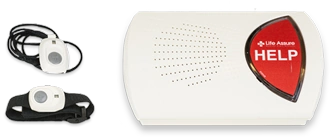
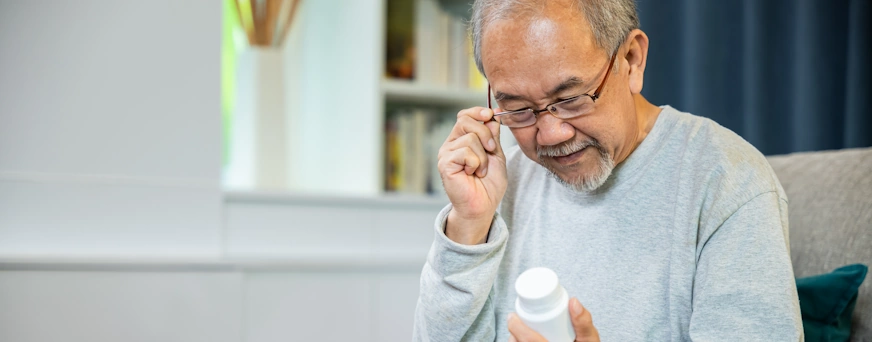

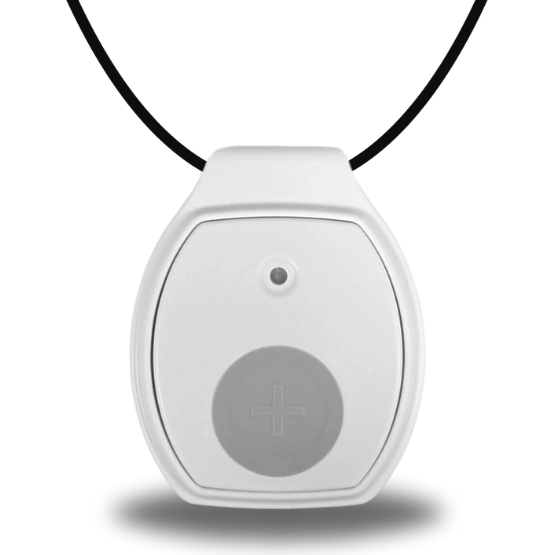
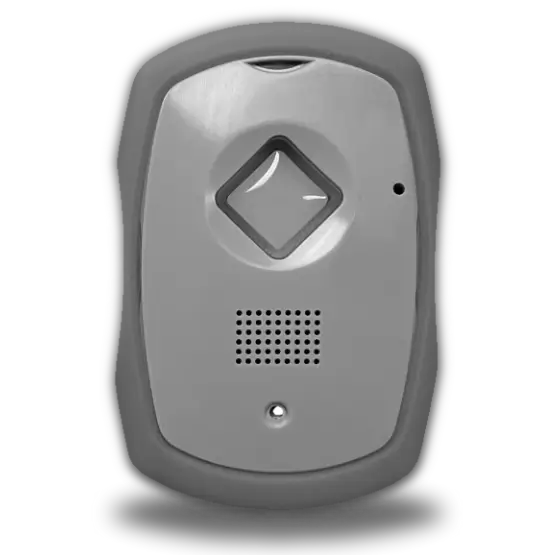

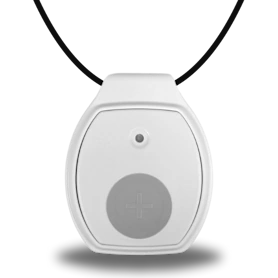

 Get Help With The Push Of
A Button
Get Help With The Push Of
A Button


